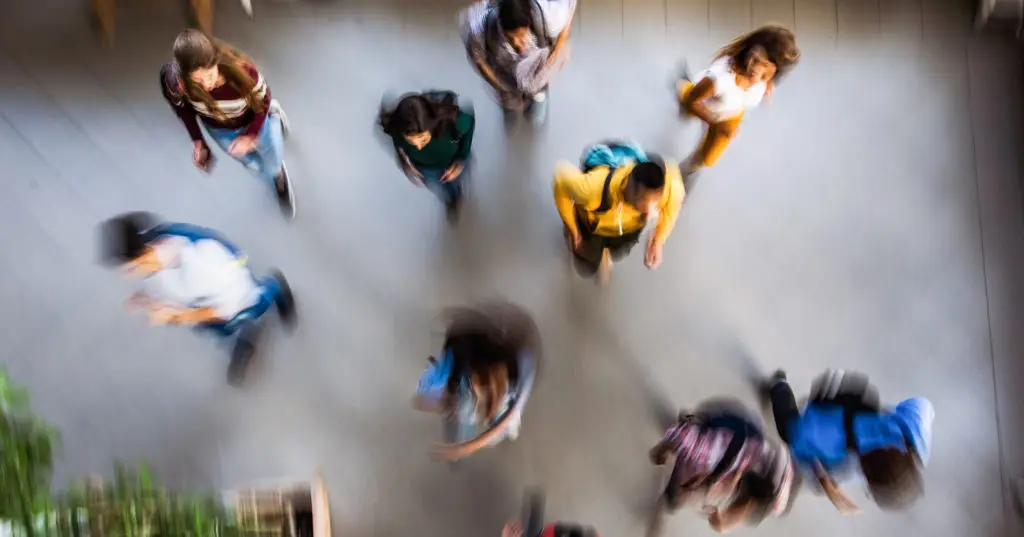For the second year in a row, many school districts are not ready to switch kids to remote learning if in-person school is interrupted.
While most large districts offer full-time remote learning, parents had to choose at the beginning of the year and cannot easily switch in or out. Now, many districts are forced to send hundreds or even thousands of COVID-exposed kids home to quarantine, and must either neglect those kids’ education or improvise remote learning once again. States have exacerbated the problem: only 17 require districts to provide instruction to kids in quarantine.
This year—like last year—the situation is too unstable to justify locking kids into one option for the whole year. Lack of realistic planning will hurt kids who will miss more days of instruction. Districts are also likely to take financial hits as increasing numbers of parents seek alternatives in homeschooling, cooperatives, pods, micro-schools, charters, or private institutions.
District leaders were right to commit to offering in-person learning this fall, but the lack of virtual options reflects the inertial pull back to normal, despite continued uncertainty over the pandemic’s course. Everyone from governors to school board members preferred in-person instruction because it is what they are accustomed to and know how to do—and to be sure, remote learning during the pandemic exacerbated stresses for students and families, and likely had a profound negative impact on student learning.
Collective bargaining agreements, the de facto rule book of public education in many localities, do not contemplate the flexibility in teacher roles needed to meet pandemic-era challenges, such as working within a virtual classroom, providing students access to materials whether they are in class or at home, or working odd hours. Districts have sought to stabilize conditions by forcing families into yearlong commitments for virtual instruction, despite the need to rapidly adjust course based on changing conditions.
In planning meetings dominated by politicians and bureaucrats, flexible offerings were sidelined in favor of fixed arrangements. As the pandemic evolved, this offloaded the hard choices onto parents, principals, and teachers.
This is not the only time rosy scenarios have driven out realistic problem-solving, nor is public education the only institution that engages in it. The standards movements of the 1990s failed because designers piled up aspirations without considering what teachers and students could accomplish with the time and resources available. In another field, the U.S. military based its early 20th-century planning around a war with the British Empire—a comfortably familiar scenario but not one that contemplated the real threats.
Not all states and localities have been willfully blind to the need for a flexible response to the pandemic. For every place like New Jersey, Kentucky, Tennessee, or New York City—where top leadership has made easy decisions that ignored the need for flexibility—there are others that planned for contingencies and are prepared to keep students engaged no matter what COVID infections do. Districts that built the infrastructure to nimbly respond to the changing conditions of the pandemic will be better positioned to meet students’ diverse needs during the recovery.
Localities that planned for only in-person learning will continue to play catch-up. And the Delta variant is surely not the last challenge that will require districts to react to surprises and educate kids when in-person instruction is not possible. Other COVID variants, other pandemics, and climate events could suddenly throw normal school operations into chaos.
And, the need for flexibility doesn’t apply just to disasters. The emerging post-pandemic economy will mean that even fewer high school graduates will be prepared for rewarding, well-paying jobs in the future. Districts and states must anticipate a horizon of possibilities and make themselves flexible enough to adapt as student needs change. They can’t afford to be stopped clocks, right only 1/12 of the time.
But as current events prove, needs don’t always get met. Public schools in many places might remain stagnant even in the face of enrollment losses and failures to prepare students. After all, bureaucracies, unions, and privileged families see little need to change, and those who want more flexibility are now fending for themselves. When discontent is atomized as now, status quo forces often win.
The need for public education to be alert and responsive to the real world has implications for people who believe it is a goal, not an institution set in stone.
Public education can’t change deeply or quickly enough to meet emergent needs if districts’ first priorities are to defend what exists, cover salaries of tenured staff, and abide by rules that reflect past political deals. The problems are systemic: families, educators, and reform supporters must overcome the temptation to work only on the problems that beset them directly. Instead, they must form alliances in favor of building flexibility and responsiveness into public education. Possible points of agreement could include:
- Local public oversight bodies committed to adapting the basic features of “school” —whether in-person, online, or blended, based on what students need and what is working.
- Funds that can be used flexibly and are not tied up in salaries and fixed costs.
- Permission for districts and schools to put aside “rainy day” funds to support ramping up needed options—including online learning and community partnerships to care for students outside school buildings—during emergencies.
- Slack in the system to support innovation—including dedicated staff time and regulatory flexibility for designated schools or community partners that experiment with new approaches.
- Highly enhanced flexibility in how teachers work, and what their job descriptions can be.
- Openness to new ways of organizing schools—for example, into pods, micro-schools, and school-community hybrids that give students access to high-quality instruction and support deeper relationships between students and teachers.
- Openness to new ideas and providers of instruction and student support, including trusted community-based organizations.
- Models of schooling that link kids to real-world professions and careers.
- Real-time evidence about student learning that empowers families and educators with the information they need, when they need it.
These needs are not partisan or ideological and there is no reason, other than inertia, that state and local public education systems couldn’t be remade to meet them. During the pandemic, inertia was briefly suspended. Families and communities devised new ways to support student learning. Schools, freed from the normal constraints governing where and when teaching and learning happen, devised new ways to support students and collaborate with families.
Some ingredients of pandemic-era education, like increased technology adoption, will become permanent fixtures of public education. But the fate of others, like learning pods or the flexibility to shift in and out of online learning, could hinge on the decisions leaders make over the coming months.
CRPE’s 25th Anniversary essays show how many of these ingredients could fit together into a system that is public, responsive, and effective. The essays don’t, however, show how local education politics can be changed in ways that privilege problem-solving over the convenience of decision-makers and job incumbents. That will require a major realignment of the powers and duties of local school board members away from protection of a fixed institution and toward response to changes in kids’ needs and the availability of innovative ways to meet them.
How to change the incentives of education system leaders so they optimize responsiveness, not stability? An open question demanding attention.
For starters, elsewhere we have suggested changing local boards’ powers so they are responsible only for assessing the fit between the local schools and kids’ needs, and authorizing new schools to fill gaps. Boards would be all about managing the opportunities available to kids, and would not employ teachers or enter into collective bargaining agreements.
We also know that while the current institutions are failing to fulfill the goals of public education—preparing every student for citizenship and economic independence—the exact structure of new institutions capable of delivering that promise for future generations of students is still unknown. Figuring that out will require an ambitious research and development effort that identifies the most pressing needs facing America’s students and promising efforts to meet those needs, quickly and rigorously learns from those initiatives, and ensures those lessons inform future efforts.
In a turbulent world, America needs a public education system that is up on its toes, not dreaming of a simpler past. But that won’t just happen. Moreover, an “every family for itself” ethos, with no common strategy, gives the advantage to the status quo. Reformers, now either in rival or mutually oblivious camps, must pull together. Otherwise, our most hidebound state and local school systems will get away with it, again.





